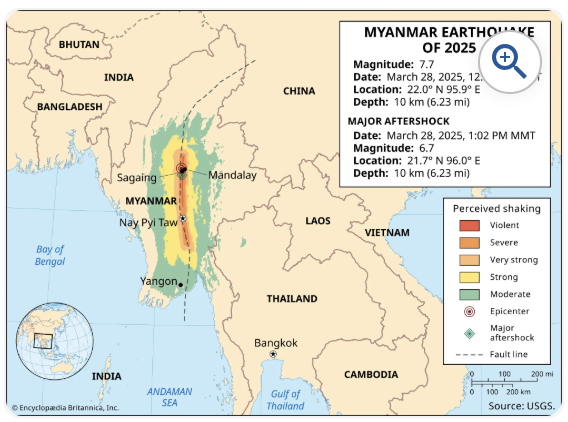Social Media and the News
June 9, 2021
Along with a global pandemic, civil unrest was a theme this past year on both sides of the aisle. There has been a flare of attention toward the Black Lives Matter movement, violence at the hands of law enforcement, protests against the pandemic guidelines, and mistrust of the 2020 election results. All of these topics have one thing in common: many Americans have strong and unmovable values.
Black Lives Matter (BLM) was founded in 2013 after the murder of Trayvon Martin, a black teenager, in Florida at the hands of a private citizen. As stated on the BLM website, the mission of the movement “is to eradicate white supremacy and build local power to intervene in violence inflicted on Black communities by the state and vigilantes.” In the summer of 2020, after the murder of George Floyd, a black adult living in Minnesota, at the hands of law enforcement officers, media attention became increasingly focused on the BLM protests. The portrayal of social movements in the media has become increasingly politicized over the past decade as many Americans primarily consume news and information from social media such as Twitter or Facebook. Approximately 48% of Americans under the age of 30 say that they solely consume current news through social media. This creates an echo chamber where they mainly view sources that reinforce their existing beliefs. In addition, many of these sources may not actually be truthful in their posts. According to the Pew Research Center, “Americans who rely on social media as their primary news source [are] the most likely to both hear and believe fake news [reports].”
Whether aligning with the Democratic Party, Republican Party, or another political group, Americans who rely on social media as their primary news source had trouble being fully informed on all political topics that their chosen candidate stood for during the 2020 election due to various social media algorithms. For example, after Facebook founder and CEO Mark Zuckerberg testified in front of Congress in 2018, it was revealed that when anyone visits a site or app that uses the services of Facebook, Facebook receives information even if the individual visiting the site (or using the app) is logged out or doesn’t have a Facebook account. An external memo Facebook put out that same year confirms the selective bias of their ad algorithms: “We can show you photos from your closest friends at the top of your News Feed, or show you articles about issues that matter most to you, or suggest groups that you might want to join.” This social media bias kept politically balanced information away from the public.
Besides BLM protests, the COVID-19 pandemic and its guidelines have been a large cause of civil unrest across the country. This past year has seen anti-mask protests around the country. These demonstrators have felt as though their rights have been infringed upon by COVID-19 safety restrictions or guidelines in their state. For instance, in Michigan, armed protesters gathered in front of the State’s Capitol building to express their feelings about the stay-at-home order that Governor Gretchen Whitmer had passed in May 2020. The protest was organized by Michigan United for Liberty, which viewed the order as unconstitutional.
While the protest in Michigan attracted approximately 8,000 demonstrators, there are others who believe that the safety of all should be prioritized during this pandemic, not individual freedoms. Mrs. Klarissa Karosen, the Director of Diversity, Equity, & Inclusion at MBS said, “America was founded on the principles of liberty and many Americans believe COVID protocols infringe on their natural human rights. Considering this value for rugged individualism, I’m not surprised there were opposing views on various state COVID mandates.” To this end, Mrs. Karosen stresses the importance of understanding the “why” behind other peoples’ beliefs, because if Americans do not attempt to understand each other, this will hinder their ability to come to a consensus on how to approach issues such as a global pandemic.
In an interview with CBC News, professor of educational technology and medic Alec Couros stated that he believed that social media can cause users to develop “increasingly radical beliefs on mask-wearing, vaccines, or a host of other issues.” Canadian psychiatrist Dr. Tamara Hinz agreed, saying many of these anti-mask protesters were inspired by the “constant barrage” of social media.
The civil unrest seemed to come to a climax on January 6, 2021, when a group of protestors stormed the Capitol Building in Washington D.C. To this day there are disagreements over the nature of this particular event. While some consider the events from 1/6 a protest similar to the BLM protests during the summer of 2020, others have called it an insurrection, a riot or even an act of domestic terrorism.
This event remains an example of something that the country has yet to come to a consensus on. These disagreements made their way all the way up to the House of Representatives where former President Donald J. Trump was impeached for “incitement of insurrection,” as many believe Trump told his supporters on January 6, the day electoral votes were to be counted by the House, to participate in the protest due to the results of what he believes to be a “rigged election.” The impeachment vote was not unanimous, with people voting almost strictly with their own party, showing that there are many who believe Trump’s words were simply misinterpreted.
In April of this year, NBC News uncovered hundreds of social media posts that mentioned plans to “move on the Capitol,” some of which included maps of the building and how to create a “stampede that would overwhelm the Capitol Police.” While in the past, Justice Department officials have said that blanket social media statements like the one mentioned previously don’t typically lead to credible intelligence as many people fail to act on the things they say online, this time may have been different. Daniel Jones, a former FBI analyst and Senate investigator criticized the FBI’s failure to deem the social media statement credible. He said, “there are thousands of [social media] posts — with tens of thousands of comments — detailing plans to travel to Washington and engage in violence against the U.S. Capitol.”
On May 28 of this year, a bipartisan bill failed on the floor of the Senate that would have created an independent commission to investigate the Jan 6 attack. With 60 votes needed to pass, only 54 senators voted in favor of the bill – with only 4 Republicans joined their 50 Democratic colleagues. Both sides have strong feelings about creating an independent commission in addition to what the impact of the January 6 attack has had on the country. While stating his opposition to the commission, Senate Minority Leader Mitch McConnell (R-KY) said, “I do not believe the additional, extraneous commission that Democratic leaders want would uncover crucial new facts or promote healing.” Senate Majority Leader Chuck Schumer (D-NY) disagrees. He said, “out of fear of – or fealty to- Donald Trump, the Republican minority just prevented the American people from getting the full truth about January 6.” Without compromise, bipartisan support becomes difficult.
Using a media outlet like AllSides can help educate the population in a way that other outlets cannot. AllSides’ mission states that they “free people from filter bubbles so they can better understand the world — and each other.” Additionally, AllSides for Schools is one way for students specifically to learn about current events. Their mission states, “by teaching students how to critically evaluate news, media content, and other information on a range of topics and how to engage with others in productive dialogue, [we help] students participate thoughtfully in their communities and our democracy as they move through life.”




